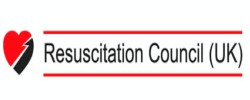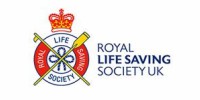
HABC Level 2 International Award in Paediatric First Aid, the Safe Use of an Automated External Defibrillator, Managing Illness and Injury
You come to us!
View open course dates & locations & book online
Welcome to First Aid Box (FAB training)
Who is this qualification for?
For learners already working or preparing to work in the industry and to provide candidates, who are responsible for the welfare of infants and children, with a more in-depth knowledge, understanding and skills to support basic first aid including managing illness and injury and the use of an automated external defibrillator
Course Content
• Define housekeeping
The role of the paediatric first aider
• Responsibilities
• Minimising infection
• First aid equipment and how to use it appropriately
• Accident/incident reports
• Infant/child definitions
Emergency situations
• Scene survey
• Primary survey
• Calling for help
First aid for unresponsive infant/child who is breathing normally
• Recovery position
• Continuous monitoring
First aid for unresponsive infant/child who is not breathing normally / the safe use of an Automated External Defibrillator (AED)
• Administering CPR
• Seizures
• Differences between using an AED on an infant/child and an adult
• Safety considerations of an AED
• Using an AED
• Using an AED with CPR
• What to do if a casualty shows signs of life and starts to breathe normally
• Information to handover with a casualty
Airway obstruction
• Mild obstruction
• Severe obstruction
• Choking
• What to do following treatment for choking
Wounds and bleeds
• Common types of wounds
• Types and severity of bleeding
• Effects of bleeding
• Controlling minor and major external bleeding
• First aid for minor injuries
Shock and anaphylactic shock
• Recognition and management of shock
• Recognition and management of anaphylactic shock
Fractures and Dislocations
• Types of fractures
• Management of fractures and dislocations
• Using different types of slings
Head, neck and back injuries
• Recognition and management of suspected concussion, skull fracture, cerebral compression and spinal injury
Eyes, ears and nose
• Conditions affecting the eyes, ears and nose
Chronic medical conditions and sudden illnesses
• Recognition and management of sickle cell anaemia, diabetic emergencies, asthma attack, meningitis and febrile convulsions
Extreme heat or cold
• Recognition and treatment of the effects of both extreme heat and cold
Electric shock
• Safely managing an incident involving electricity
• Treating a casualty for electric shock
Burns and scalds
• Recognising the severity of burns and scalds
• Treatment of burns and scalds
Poisoning
• Routes that poisonous substances take to enter the body
• Managing poisoning
• Sources of information for treating those affected by sudden poisoning
Bites and stings
• The severity of bites and stings
• Managing bites and stings








